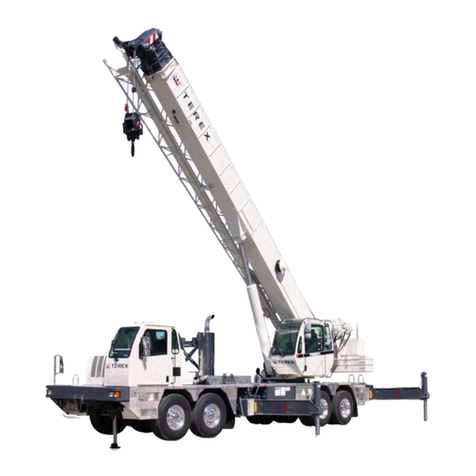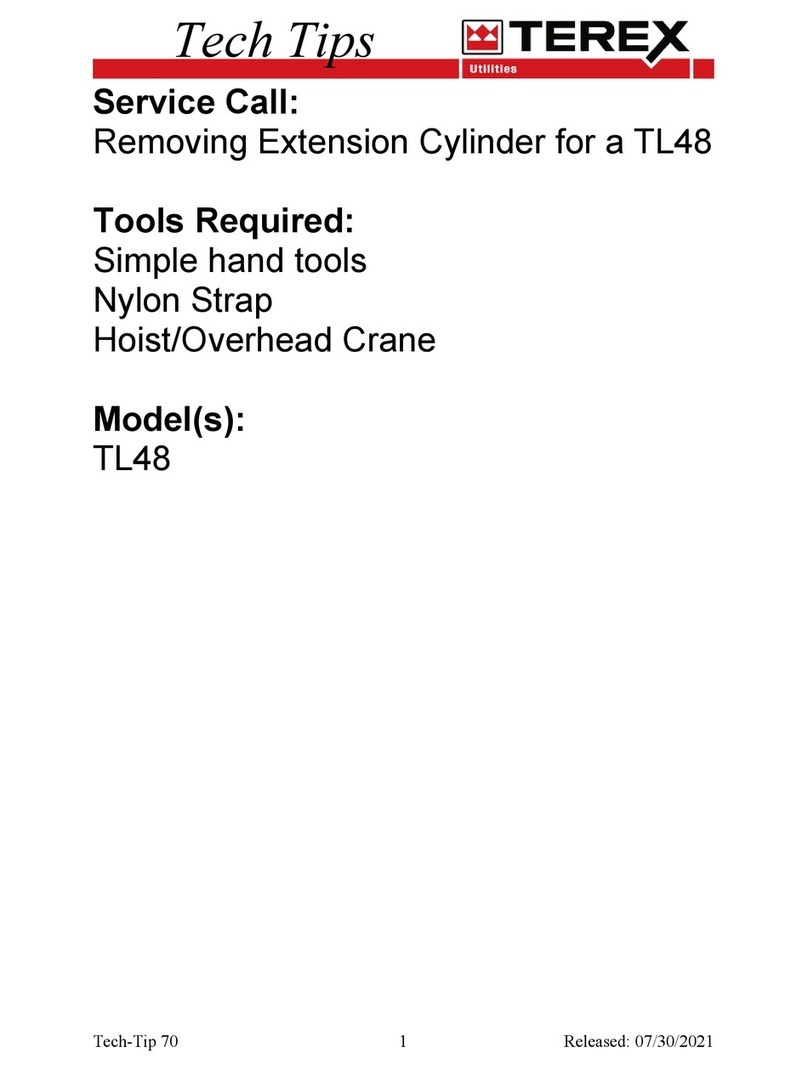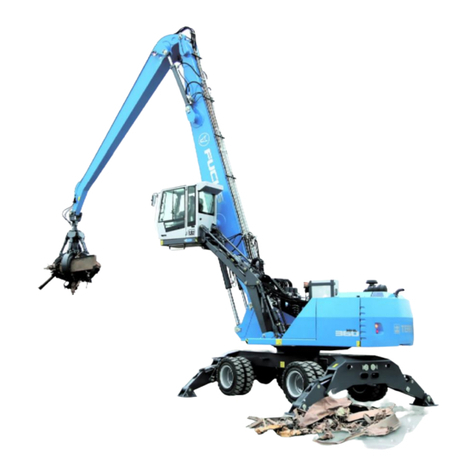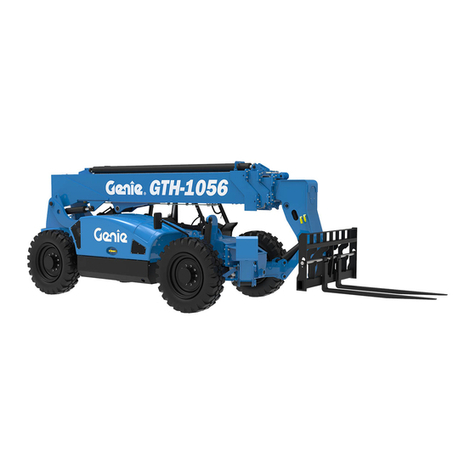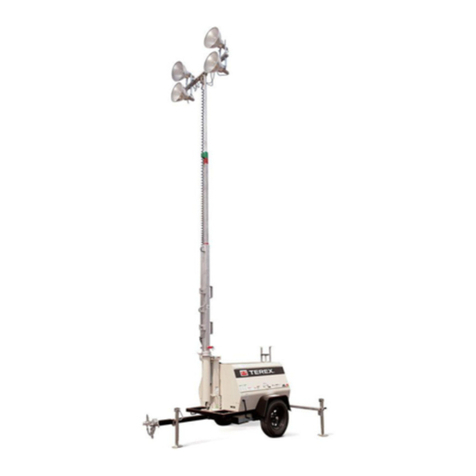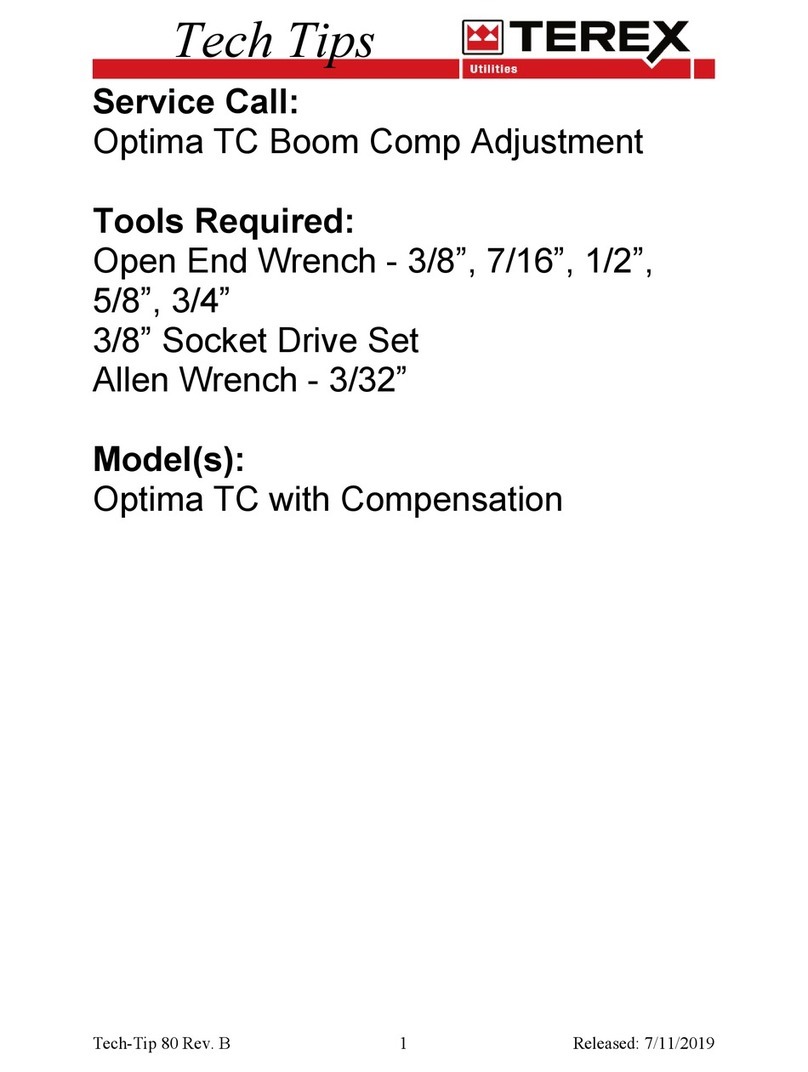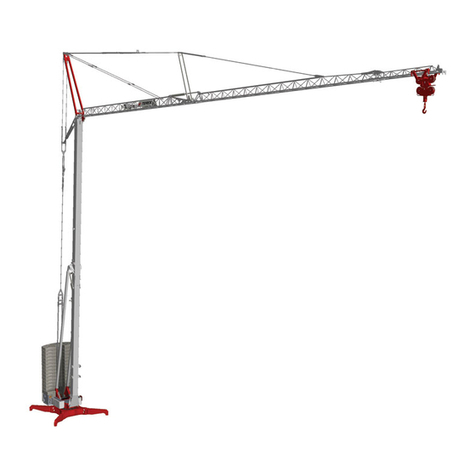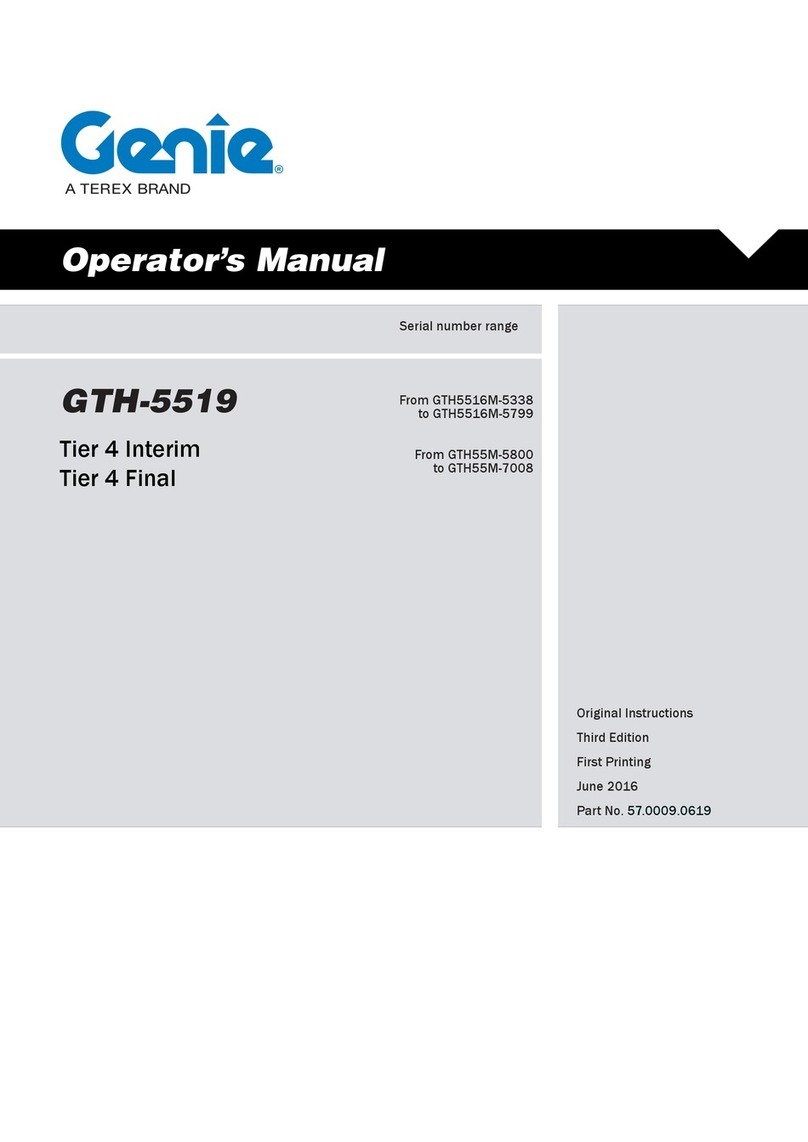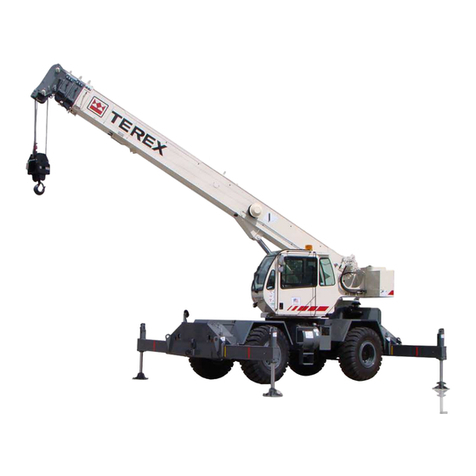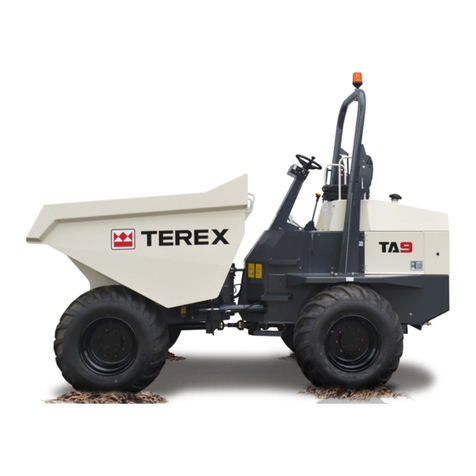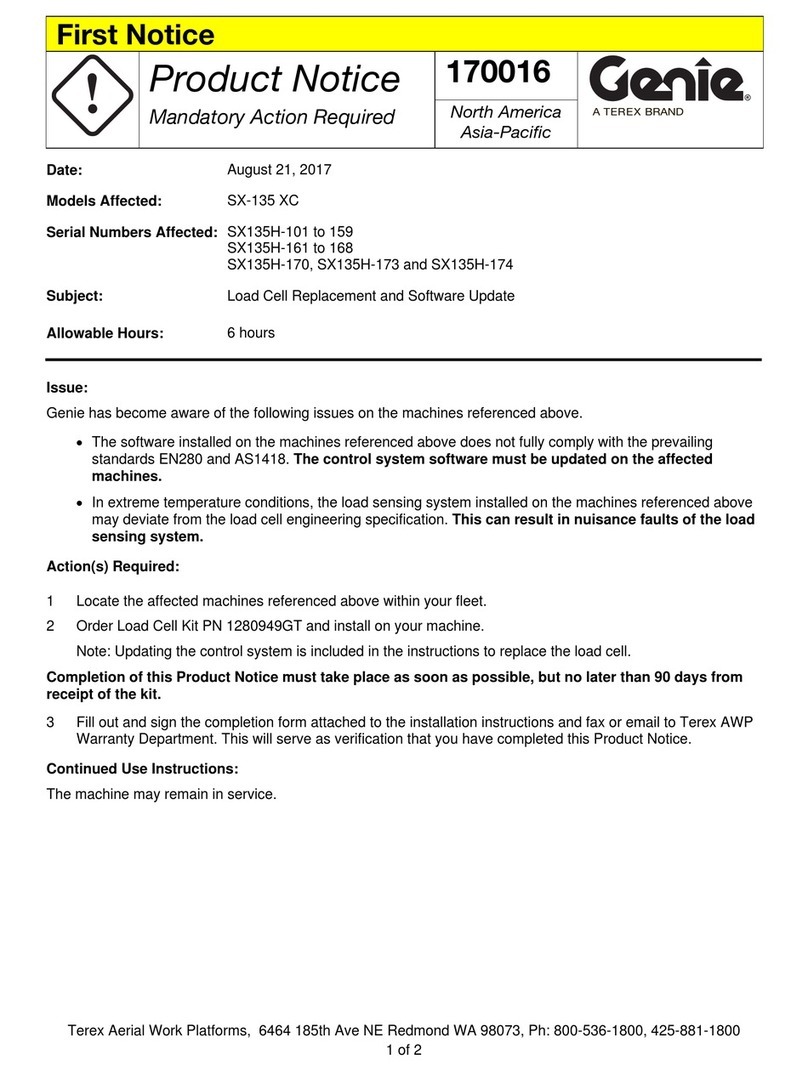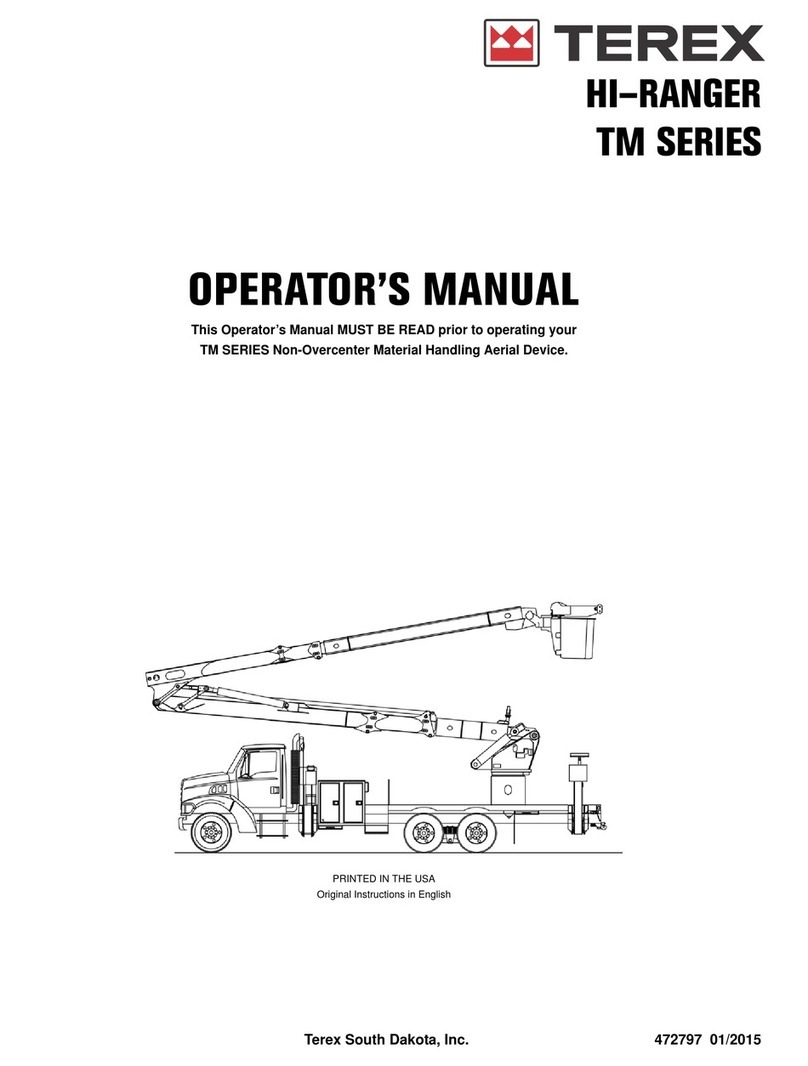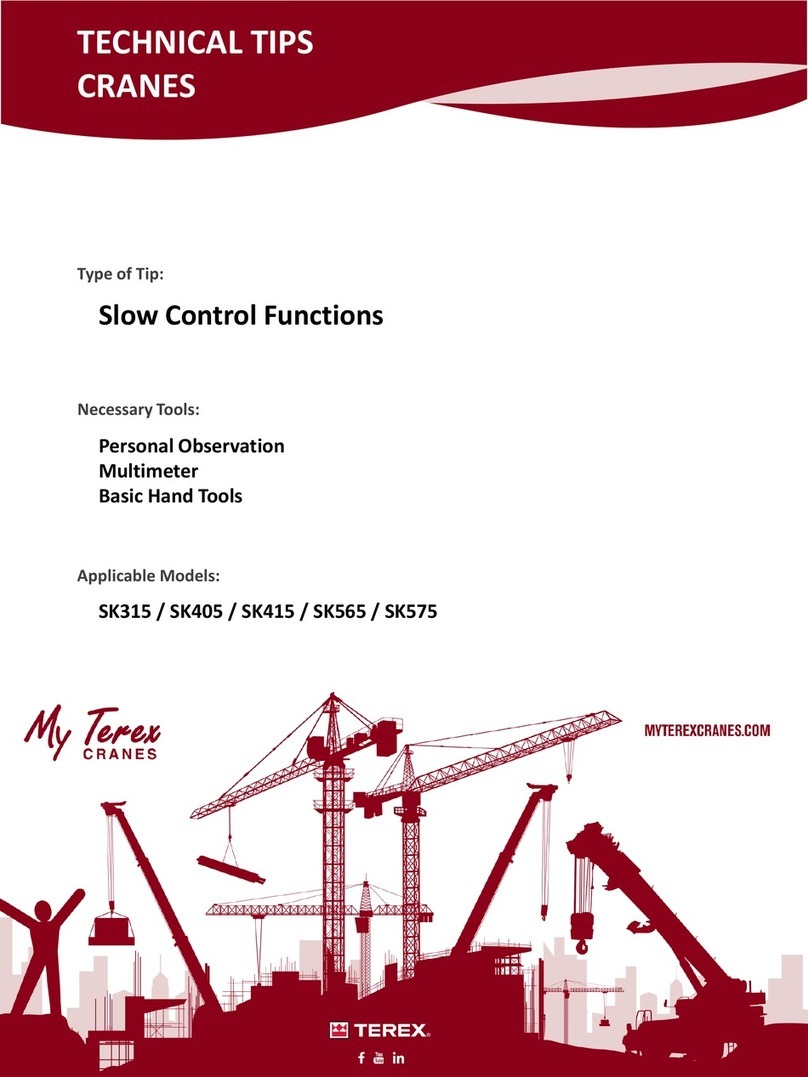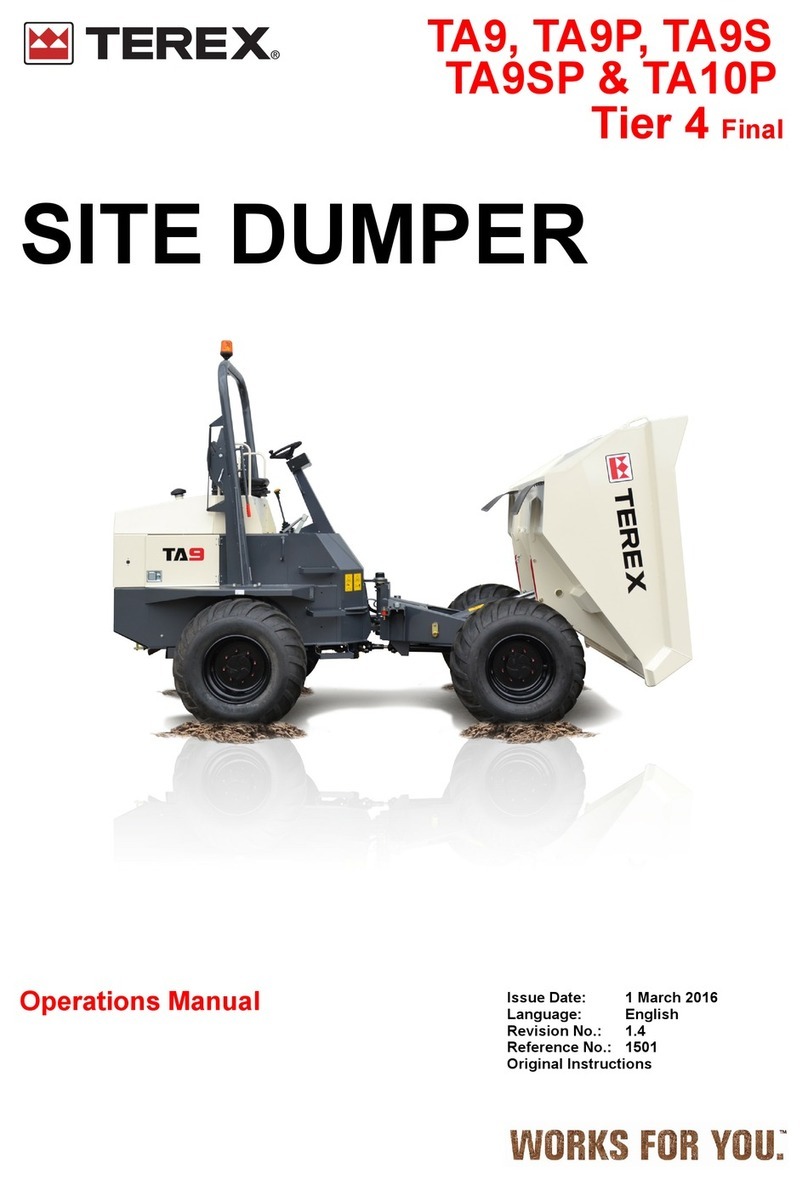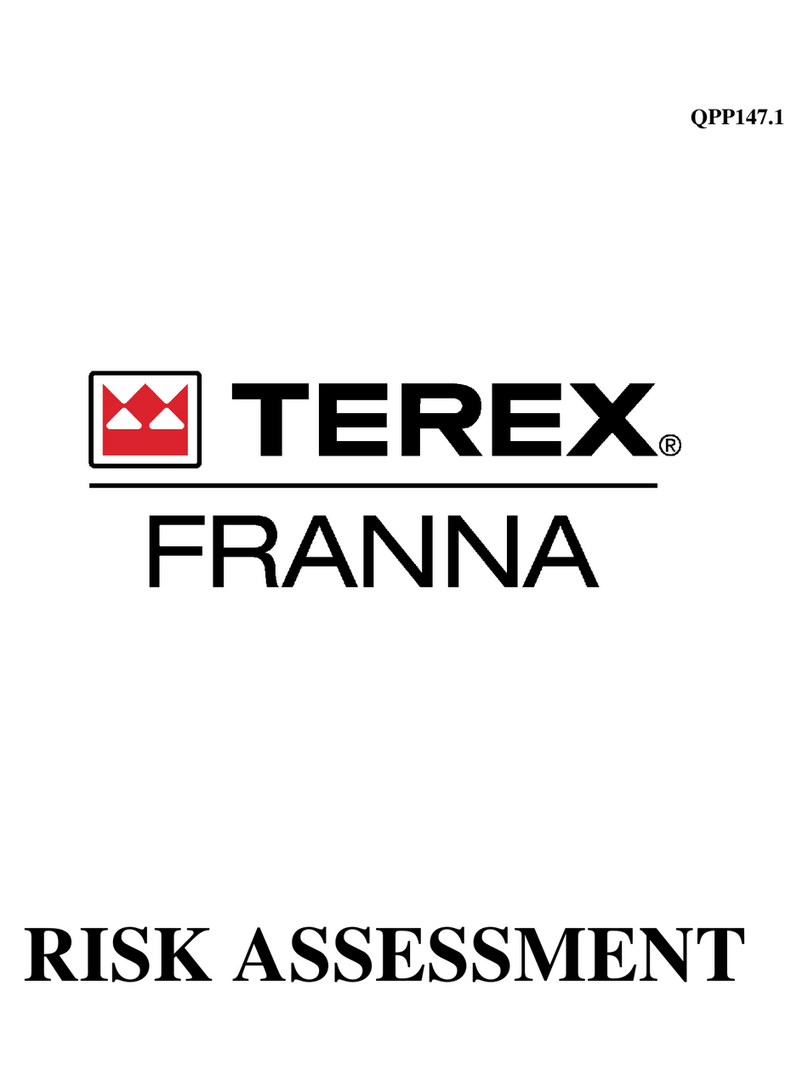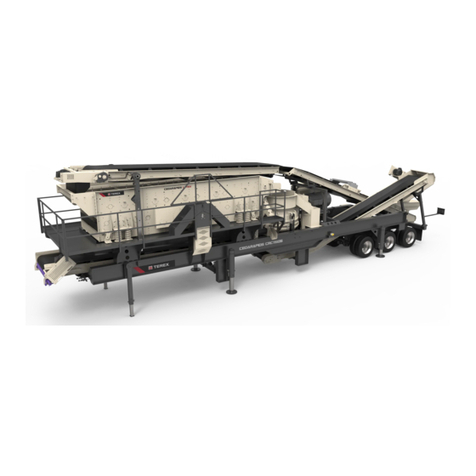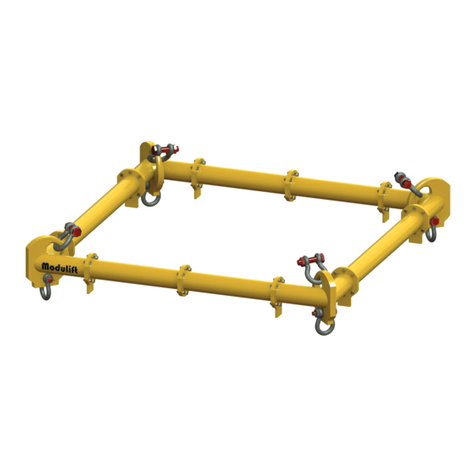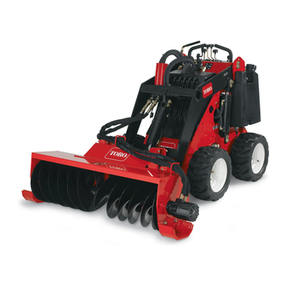
Issued: July 2003
It is the responsibility of the owner of the construction and in-
dustrial equipment products to be knowledgeable about fed-
eral, state and local regulations that effect the total usage of
his equipment, and responsibility to working personal and the
public. Since regulations are subject to change, and also differ
from one local to another, this manual makes no attempt to
provide such information.
Terex Cranes provides appropriate operation and mainte-
nance manuals for various construction and industrial equip-
ment products that it manufactures and sells. In addition,
where applicable, appropriate national consensus standards,
industry standards and safety related manuals are included
with the Terex manuals in the shipment of each product. It is
company policy to provide this information for the owner or
user of the equipment. It is expected that the owner or user
will utilize these manuals and standards to provide the appro-
priate information and training to those people who are to op-
erate, maintain and supervise the use of equipment in a proper
and safe manner.
Construction and industrial equipment is designed and man-
ufactured to perform heavy-duty work. Under normal usage,
the equipment will wear. For this reason it is essential that the
owner/user establish and perform a periodic inspection of the
equipment. The objective of inspection programs is to pre-
vent accidents, reduce downtime and keep the equipment
working efficiently. These inspection programs should be de-
signed to discover worn, cracked, broken or deteriorated parts
and loose or missing fasteners before they result in a problem.
Proper training and inspection programs are essential to
avoiding injury to persons, damage to property and excessive
maintenance costs.
Read and understand the manuals provided with this equip-
ment. Assistance is available from the distributors of your
Terex product and from the Terex manufacturing facility.
CONSTUCTION AND INDUSTRIAL EQUIPMENT
PRODUCT SAFETY
When operating a hydraulic crane, the operator should realize that hydraulic and
structural competence, NOT TIPPING LOAD, is often the determinant of lifting ca-
pacity.
Therefore, THE OPERATOR MUST BE GUIDED SOLELY BY THE APPROPRI-
ATE MANUFACTURER’S LOAD RATING CHART when considering load
weights. The manufacturers rated loads must never be exceeded.
Follow the recommended operating and maintenance proce-
dures and keep your machine operating at MAXIMUM EF-
FICIENCY. Use the Suggested Crane Periodic Inspection
Check List provided. In addition, we STRONGLY URGE
that a MAINTENANCE LOG be kept in conjunction with all
maintenance performed on the machine.
If you desire any special information regarding the care and
operation of the machine, we will gladly furnish it upon re-
quest. Because we build
various types of equipment, we ask that you include your ma-
chine model and serial number in all correspondence so that
we can provide the correct information.
The information, specifications, and illustrations in this pub-
lication are based on the information in effect at the time of
approval for printing. We reserve the right to make changes
at any time without obligation.
